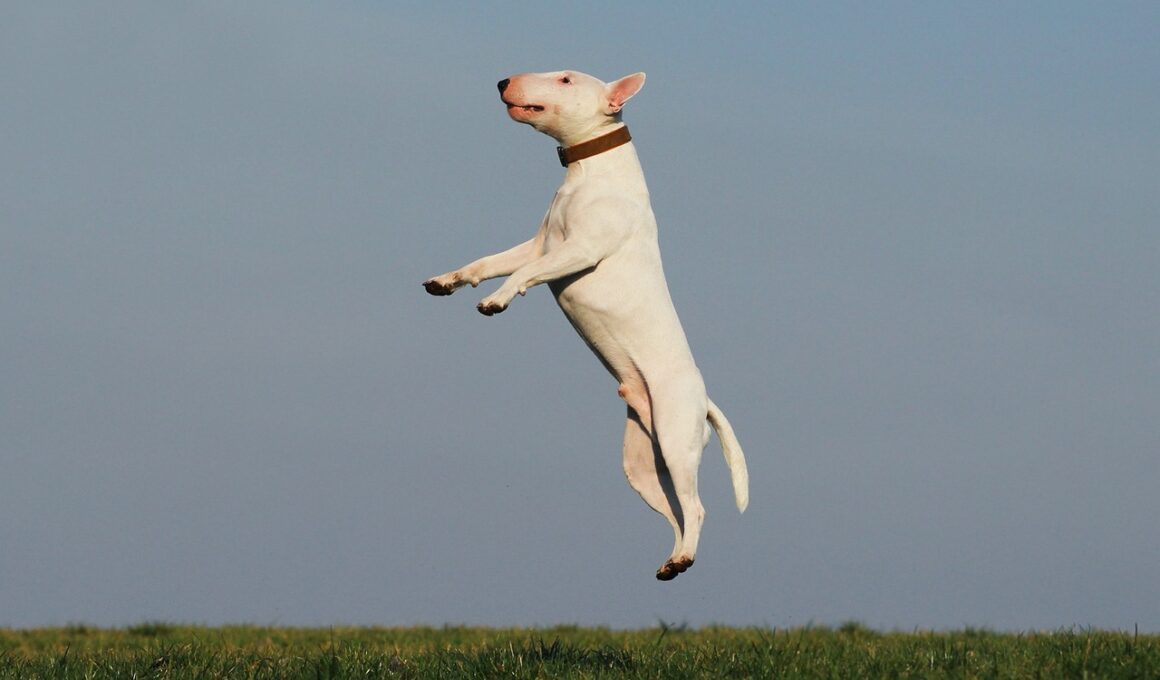The Importance of Patience and Consistency in Training
Training your dog for trick competitions can become a fulfilling and enjoyable experience. However, it often requires significant patience and consistency from the handler. A common mistake many trainers make is expecting immediate results from their furry companions, which can lead to frustration and setbacks. By adopting a patient approach, owners can better connect with their dogs, understanding their unique learning pace and style. As dogs learn tricks, they often face challenges and uncertainties. The key to overcoming these lies in remaining consistent throughout the training process. Providing clear and unambiguous cues can help dogs grasp what is expected of them. When they receive consistent signals, they feel secure and confident in their efforts. This foundation of trust allows for an effective training environment. Another crucial aspect of consistency is routine. Regular practice can help solidify each trick in your dog’s repertoire. Aim to incorporate training sessions into your daily routine, keeping them brief but frequent. It is essential to celebrate small victories throughout the process as well, fostering a positive and motivating atmosphere for your furry friend.
One significant benefit of effective training in trick competitions is the bond strengthened between owner and dog. A strong relationship enhances communication and mutual trust, creating a more enjoyable experience for both parties. When dogs recognize that they can rely on their handlers, they become more confident and willing to learn. Additionally, maintaining patience is vital when teaching more complex tricks. It is common for dogs to become frustrated when they do not immediately understand an intricate gesture or cue. Handling these instances calmly, rather than with aggravation, leads to a more relaxed and receptive learner. Incorporating various training methods may also help identify what resonates with your dog. Techniques such as positive reinforcement or clicker training can be effective tools during trick training. Celebrate progress with treats, praise, or affection to motivate your dog. It is essential to remember that each dog is unique, and their learning curves will differ. Focus on your dog’s strengths and adapt your training to align with their skills and preferences. Tailoring your approach will encourage your dog to engage and enjoy the training process, leading to desired outcomes.
Consistency in Training: Building a Strong Foundation
Consistency in training extends beyond clear signals; it encompasses having a reliable environment as well. Ensuring that training takes place in a familiar setting can help alleviate distractions for your dog. This familiarity allows them to focus, which is particularly critical when learning new tricks. As you progress, gradually introduce distractions to help them generalize their skills in various environments. Always go back to basics when faced with challenges; it is more beneficial to build upon a strong foundation than to rush ahead. Patience is essential here. If a dog struggles, take a step back and reinforce previous commands they understand instead of pushing ahead. This strategy builds confidence and reinforces learning, creating a solid skill set from which the dog can grow. Establish realistic expectations, as every dog’s learning pace will differ. Celebrating the progress made at each step boosts morale for both the dog and handler. Trick competitions can be an excellent opportunity for socializing as well, exposing your dog to other handlers and their pets, further enriching the learning experience. With patience, consistency, and a solid training framework, success in trick competitions becomes attainable for every team.
Understanding the learning process can significantly enhance training experiences for both dog and owner. Dogs often respond better when they feel motivated and engaged. This motivation can be achieved through play, treats, and praise, allowing trainers to maintain a positive outlook during practice sessions. When dogs view training as a form of play, they are more likely to enjoy the process. However, achieving this level of engagement may require patience and creativity. Varying the training exercises and incorporating new tricks can keep sessions exciting and mentally stimulating for dogs. An important aspect of consistency is ensuring that everyone involved in the dog’s training adheres to the same commands and techniques. Whether it is family members or friends, uniformity in training approaches prevents confusion for the dog. This cohesive environment enables your dog to further trust and understand the expectations with clarity. Monitoring progress is also essential; taking notes about successes and areas needing improvement helps refine training strategies. Documenting these details allows pet owners to adjust their techniques as needed, focused on enhancing their dog’s overall learning experience in preparation for future competitions.
Addressing Challenges in Trick Training
Every dog trainer will face challenges at one point or another in their training journeys. These hurdles can stem from many factors, including distractions, physical limitations, or even emotional states. Addressing these challenges with a patient mindset is crucial to gathering insight into the needs of the dog. Frequent assessment of your dog’s emotional well-being ensures they remain engaged and eager during training. Keep an eye on body language; signs of discomfort may indicate a need for a break. In such moments, giving dogs a chance to breathe or play is essential for maintaining a positive atmosphere. Keeping training sessions in short segments can help alleviate stress on both dog and trainer. Allowing for this downtime fosters a sense of security during the learning process. Encouragement is equally important in addressing obstacles. Supporting your dog through challenges empowers them to embrace their training. Reward efforts, no matter how small, as these acknowledgments can spur confidence. Additionally, staying adaptable throughout training sessions ensures you make necessary changes based on how the dog responds, leading to a more tailored approach overall and strengthening your bond.
Ultimately, the goal of trick training competitions transcends merely winning awards or accolades. It serves to strengthen the bond between dogs and their handlers, fostering mutual respect and understanding through patience. The memories made during these experiences will undoubtedly remain cherished long after the competition is over. An important consideration is finding the right balance between seriousness and fun. While dedication is essential for developing skills, the enjoyment derived from the process should not be overlooked. Keep training light-hearted, allowing for laughs and shared moments along the way. As trainers and dogs continue to grow together through each competition, they create a special bond that reflects their hard work and dedication. Mastering tricks may take time, but the lessons learned within this journey are invaluable. Whether you are preparing for a local competition or simply enjoying training for the thrill of it, patience is the secret ingredient that binds the entire process together. As dogs thrive under consistent guidance, pet owners will find themselves rewarded with growth, companionship, and countless joyful experiences throughout their trick training adventures.
The Path to Success in Trick Competitions
The importance of patience and consistency cannot be overstated in the world of trick competitions. Having the right mindset sets the stage for long-term learning and accomplishment. Embracing the journey fosters excellent morale and a lasting enthusiasm for training. The more dogs feel rewarded and included, the more likely they are to excel in competitions and bond with their owners. Therefore, always approach training with a willingness to adapt and adjust techniques as necessary. Flexibility is the key to successful partnerships in dog training. Ultimately, the goal of success should always amplify the joy of training. This approach enables dogs and handlers to enjoy their hard work together. It is essential to assess progress regularly and change strategies if results stagnate. Engage with fellow trainers, either online or in person, to exchange ideas while creating a supportive community around trick training. The friendships formed throughout this process may also serve as motivation. When training reaches higher levels, camaraderie and support can offer a lifeline. With this collaborative spirit in place, you will strengthen your skills and ultimately enhance the experience for both dogs and trainers.
Remember to celebrate both the small and significant achievements that arise during the training journey. By acknowledging these accomplishments, you nurture an atmosphere of positivity that encourages growth. Simple verbal praises, treats, or excited reactions create an environment where dogs thrive and continue to learn. With patience and consistency at the forefront, you can look forward to sharing countless delightful memories as you progress alongside your canine partner. Competitions may become milestones to track, but the true reward comes from deepening the mutual bond that develops through shared experiences. Patience will always be a partner, guiding you through challenges, while consistency provides the structure necessary for success and sustenance. In conclusion, trick training, when approached with due diligence, has the power to transform not just the dog’s abilities but also the relationship between handler and pet. Integrity, trust, and understanding foster their credibility, ultimately shaping them into talented competitors. By prioritizing patience and consistency, both handler and dog can achieve blissful companionship and an arsenal of impressive tricks. Your adventurous journey is just beginning, and there is much excitement awaiting you both as you continue exploring the world of dog training!


